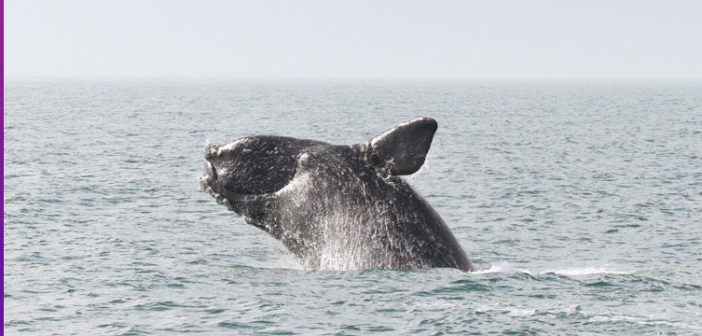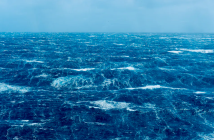Spurred by the growth of offshore wind farms, the Federal Government is trying to offer more protection for endangered North Atlantic right whales.
Indeed, the National Oceanic and Atmospheric Administration (NOAA) and the Bureau of Ocean Energy Management (BOEM) just announced a draft of their strategy to protect the whales. They want to better understand the effects of offshore wind farms on the whales and their habitat, and they started a public review and comment period that ends on Dec. 4.
Amanda Lefton, BOEM director, said the agency “is deeply committed to ensuring responsible offshore wind energy development while protecting and promoting the recovery of the North Atlantic right whale.” She said BOEM would work the NOAA Fisheries to get the best scientific information while “seeking open and honest feedback from the public to help us evaluate and improve this effort.”
North Atlantic right whales are enormous, docile creatures; males are usually about 50 feet long (the largest recorded was 61 feet long and weighed 234,000 pounds). They have been listed as an endangered species since the Endangered Species Act was adopted in 1970.
The latest reports estimate that there are fewer than 350 remaining, including fewer than 100 breeding females; the number of calves born in recent years has been below average. NOAA Fisheries says the whales have experienced an unusually high death count since 2017, with 34 documented dead, 21 seriously injured, and 36 ill or less seriously injured.
The leading causes of death have been entanglement in fishing lines and impact with boats. Scientists also believe that man-made noise in the ocean disrupts the whales’ ability to communicate.
In North America, whaling dates to the 17th century. The whaling industry peaked in the mid-1800s, when whalers from Nantucket, New Bedford, Massachusetts, and Long Island were killing about 100 whales a year. By the early 1890s, commercial whalers had hunted them almost to the brink of extinction. The last whaler, the John R. Mantra, left New Bedford in 1927.
North American right whales usually stay fairly close to the coast. They are slow, and feed close to the surface. They migrate between their feeding grounds off Labrador in the summer and their winter calving areas off Georgia and Florida in the winter.
They got their name from being the “right” whales to hunt because of their high blubber content; they floated when they were killed. Read more:




